#life in australia
Text
so you wanna write a heartbreak high fic, but you're american...
As an Australian who writes fanfic for Glee (which is American), it's interesting seeing kind of the opposite thing happen with Heartbreak High, which is very much an Australian show (even though there's a couple things here and there that I'll get into in this post), and I thought I'd offer my perspective as someone who grew up and went to school in Sydney (and is also very autistic and detail-oriented). I think this might be the first time an Australian teen drama has gone mainstream, but there's a lot of specific cultural things in Australia that tend to get lost in fanfiction.
So, without further ado, here is your guide to how to write about high school in Australia (or if you just want to learn about Australia, here tis).
(Disclaimer: this is mostly based on my experience living in NSW where Heartbreak High is filmed and set, but there might be some subtle differences in other states)
{This is a photo from Maroubra Bay High School, which doesn't exist anymore and is now the location where Heartbreak High is filmed}

Basic things: The school year starts at the end of January and ends in mid-December, and is broken up into 4 10-week terms, with two weeks holiday between each term and 5-6 weeks at Christmas. We're in the Southern Hemisphere, and February is an absolute nightmare weather-wise. In New South Wales (NSW), you're in primary school from years K-6 and high school from years 7-12. People generally refer to the grade they're in as "year #" or sometimes "grade #". If you go to a public school, it's usually with kids from your local area. Primary schools are usually called [Suburb Name] Public School (sometimes there's a "north" or "west" or even a street name instead; high schools are generally [Suburb Name] High School. School starts around 8:30 and ends at around 3. There's recess in the morning (usually around 11am) and lunch in the afternoon (usually around 1-1:30pm). Kids will either bring their own lunch or buy from the canteen, which these days is generally meant to be "healthy". The legal drinking age here is 18; that being said, it is not illegal for parents to let their children drink alcohol at home under their supervision (so if a 16-year-old's dad lets them have a beer at home, they're not going to get charged with supplying alcohol to a minor). Drinking culture in Australia is pretty feral and pretty much every social gathering involves alcohol. The youngest you can be to start school is turning 5 on or before the 31st July and the latest you can start is the year you turn 6; most parents, particularly those that are more well-off and can afford that extra year of preschool/childcare, start their kids the year they turn 6 (even if they turn 6 in January), so most teenagers will turn 18 during year 12 (which generally involves, parties, drinking and pubs). I did not. I turned 18 the day after O-week at uni ended, which is my villain origin story, but in some instances, a kid who is a month away from turning 19 will be in the same year 12 class as a kid who turned 17 four months ago without having repeated any grades.
Language & Slang: Australian slang is so niche that I'm just going to link you to this document, but just be aware that some of this shit is outdated and not used by anyone not named Alf Stewart, so use your better judgement. Thongs are a pair of shoes. Prawns are seafood (not shrimp; no one says "throw shrimp on the barby"). Australians swear a lot. Some of my favourite swears are "get fucked", "fuckwit", "fucknuckle", "shitcunt" and many others. We use "cunt" as a term of endearment and often use "mate" to be as passive aggressive as possible (call your mates "cunt" and cunts "mate"). Nobody fucking says "g'day mate" (and, while we're at it, nobody fucking drinks Fosters).
Uniform: Hartley High is a non-uniform school. This is actually extremely rare in Australia and I think there's only like 1 or 2 mainstream schools in NSW with no uniform. The vast majority of Australian schools have uniforms ranging from the typical stuffy blazer-and-straw-hat combo at the likes of Shore and Scots to a simple polo shirt and footy shorts/trackies in your average rural or regional public school. In the original series from the 90s, it's established that the school did at one point have a uniform that was a plot point in an episode where Nick Poulos (the main character at the time) is elected class captain to the chagrin of conservative teacher and football coach Bill Southgate. Other schools in the area would probably have a uniform; the school where it was filmed is now closed, but I did find a picture that shows what the uniform once looked like (see above).
Geography: Hartley High is located in the South Sydney/Eastern Suburbs area, so feel free to incorporate a little Rabbitohs/Roosters rivalry into your fic for that extra bit of authenticity. We play rugby here, which Australians also call "footy". Australian Rules Football (AFL) is also colloquially called "footy", which can get very confusing. Private schools (like the one where Darren's fuck buddy Jacob goes) tend to favour rugby union. Pretty much everyone (and I mean everyone) has a rugby league team they support. For example, I'm a Rabbitohs supporter, my mum is a Cowboys supporter and my dad is a Broncos supporter. There's also State of Origin, which is NSW vs Queensland (basically you support the state you were born in but some people jump on the Queensland bandwagon whenever they're winning ... fuckwits).
Classes and Timetables: Timetables here operate fortnightly, so it's not overly common to have the same class at the same time every day. Generally there's a rollcall class in the morning for 20 minutes where teachers do things like read notices, hand out notes and check uniforms and phones (I'm pretty sure the NSW education department actually just banned the use of phones in schools), then you'll typically have two classes, then recess, then another two classes, then lunch, then maybe one or two classes followed by home time.
Here is a summary of everything kids in New South Wales have to learn in high school:
Stage 4 (Years 7-8): English, Maths, Science, HSIE (History/Geography), TAS (e.g. cooking, sewing, metal work, woodwork, digital technology), CAPA (generally just music and art but can also include dance and drama), PDHPE (theory and prac), LOTE (my school offered French and Italian, but there's a massive variety of languages on offer and a lot of schools actually teach the local Aboriginal language).
Stage 5 (Years 9-10): English, Maths, Science, HSIE, PDHPE and electives. The number of electives that can be chosen vary from school to school, but some popular examples are PASS, Art, Drama, Music, Food Tech, Metal, Woodwork. Some schools offer things like STEM as an elective and others offer, say, two electives and have all students undertaking some kind of STEM class. What my school did was offer four electives - two for year 9 and 10 and then two for just year 9 because Australian History and Australian Geography would take up those extra two timeslots. I chose Music, Italian, Drama and, for some reason, extension maths.
Stage 6 (Year 11-12): this is the lead up to the HSC, and it's where things start to get complicated so ... everyone has to study English (Advanced, Standard, Studies, Extension and EALD) and I think Maths (Advanced, Standard, Extension and a course called Numeracy which is more everyday numeracy in society), then a whole bunch of subject choices that can be found here, and the HSC has no requirements as to the types of subjects you can study (e.g. there's no language requirement, science requirement etc. like in the US; you got that shit out of the way in stages 4 and 5). There are also VET subjects that give you a TAFE qualification when you finish them which is nice (most popular one is Hospitality). Then you get your HSC at the end of year 12.
This was so long that there is going to be a part 2 (apparently there's a lot to know about living in NSW and going to school there and it's longer than 4000 characters), so stay tuned for things like student leadership, sport, extracurricular stuff, uni (this is probably the area that's the most different from the US) and whatever other extraneous things I can think of.
#heartbreak high#fanfic advice#life in australia#basically a guide to how to write about school in australia if you're american
59 notes
·
View notes
Text

"Famine is a useful word when you do not wish to use words like 'genocide' and 'extermination'."
- Frank O'Connor, Irish author.
#Frank O'Connor#genocide#war crimes#war criminals#israel#israhell#gaza#palestine#free palestine#apartheid#from the river to the sea palestine will be free#book quotes#quotes#quoteoftheday#book quote#life quote#beautiful quote#quote#quotable#free gaza#gaza strip#gaza genocide#gazaunderattack#ausgov#politas#auspol#tasgov#taspol#australia#fuck neoliberals
9K notes
·
View notes
Text
Tuần đầu tiên của bạn ở Úc khi đi Du học tại Úc
Thiết lập Mã định danh sinh viên duy nhất của bạn khi đi du học tại Úc
Nếu bạn có kế hoạch đi du học tại úc trong một trường đại học ở Úc, tham dự TAFE hoặc thực hiện bất kỳ khóa đào tạo nào khác được công nhận trên toàn quốc, bạn sẽ cần một Mã định danh sinh viên duy nhất (USI). Với USI, bạn có thể nhận được bằng cấp hoặc tuyên bố đạt được.
Bạn chỉ có thể tạo USI sau khi bạn đã đến Úc và thông…

View On WordPress
0 notes
Text
9 Beautiful and Rare Species Found Only in Australia

The supercontinent of Gondwana split 180 million years ago. What would become Australia and Antarctica were part of a breakaway landmass from that breakup. Australia had completely separated by the time it travelled north on its own 30 million years ago. Since then, modifications to the land’s climate and physical isolation from the rest of the world have contributed to the development of Australia’s distinctive flora and fauna. Australia is the only place in the world where more than 80% of our flora, animals, reptiles, and frogs can be found.
About one million different native animal species can be found in Australia.
More than 80% of the country’s mammals, reptiles, and frogs, as well as the majority of its freshwater fish and 70% of its bird species, are exclusive to the Australian natural environment.
140 species of marsupials, such as kangaroos, wallabies, koalas, wombats, and the Tasmanian Devil, which is currently only found in Tasmania, are known as rare animals in Australia The dingo is the largest carnivorous mammal native to Australia and a wild dog.
About half of the 828 bird species found in Australia are unique to the country, with the huge, nearly two-meter-tall flightless emu being the most well-known.
Waterbirds, seabirds, and birds that live in open woodlands and forests all abound in Australia, including black swans, fairy penguins, kookaburras, and lyrebirds. Australia is home to 55 different species of colourful parrots, as well as a stunning array of cockatoos, rosellas, lorikeets, parakeets, and budgerigars.
More poisonous snake species, namely 21 of the 25 deadliest species, as well as two types of crocodiles, one saltwater and one freshwater, may be found in Australia than on any other continent.
The UNESCO World Heritage-listed Great Barrier Reef, which is the biggest coral reef system in the world, is also located in Australia. With our Exploring Our Ocean course, you may learn more about marine environments.
The predatory great white shark, which can reach a length of six metres, the enormous whale shark, which can grow to a length of 12 metres, and the box jellyfish, one of the world’s most venomous creatures are among the distinctive marine species.
Kangaroos, dingos, wallabies, wombats, and, of course, koalas, platypus, and echidnas are just a few of the well-known Australian wildlife. However, there is still a great deal that is unknown about the native creatures of Australia. In this article, we’ll look at 9 of the most unique animal species that are considered rare animals in Australia.
Why are Australian animals so unique?
Since Australia is geographically isolated in the southern hemisphere and is known as “The Land Down Under,” many of its animals are unique to Australia.
Around 250 million years ago, the Earth consisted of simply one enormous supercontinent called Pangaea, according to evolutionary history and fossil evidence.
After around 50 million years, this supercontinent split into the continents Laurasia and Gondwana. Monotremes and marsupials dominated the region of tropical forests in Gondwana at the time of this split, whereas placental mammals originated in Laurasia.
After thereafter, in the Jurassic Period, 180 million years ago, the western part of Gondwana, which comprised Africa and South America, split off from the eastern half, which contained Madagascar, India, Australia, and Antarctica. 40 million years later, India gradually broke away from Australia and Antarctica, forming the Indian Ocean. Australia and Antarctica slowly drifted to the south, where they were surrounded by immense oceans and cut off from the rest of the world.
Australia and Antarctica ultimately split apart 50 million years ago. Its environment changed as it moved away from the southern arctic zone, becoming warmer and dryer, and new animal species emerged and took over the landscape.
Eventually, monotremes and marsupials took over as the main mammals in Australia due to their less demanding reproductive systems and greater suitability for this new climate.
The original inhabitants of the Australian landmass no longer interacted with species from other continents, thus they continued to develop on their own. Australian native animals are distinctive from those found elsewhere in the globe because of their distinct evolution, which has produced several odd Australian animals.
Fitzroy River Turtle
Rheodytes leukops, a species of turtle from the Rheodytes genus, lives in the Fitzroy River. The other species in that genus, Rheogytes devisi, has long since gone extinct, leaving only them as the remaining species. In Queensland, Australia’s Fitzroy River and its tributaries are where you can find them.
Fitzroy River turtles spend roughly 21 days submerged. They are remarkably adaptable creatures. The other species of their genus is extinct, leaving only these critters as survivors. The extinct species was known by the name “Rheodytes devisi”. September to October is the time when they lay their eggs.
These turtles are classified as Vulnerable species on the IUCN Red List. Because of habitat degradation, predators, and population decrease, they are classified as Vulnerable by IUCN. These turtles are frequently attacked, along with their nests, by foxes, pigs, and goannas.
Because predators frequently attack and totally destroy their nest, there are no surviving hatchlings left, which is a major factor in their Vulnerable conservation status. Its population growth is challenging for this species because of this.
To get the most out of their toe daggers, cassowaries can jump feet first, so their claws can slash downward in mid-air towards their target.
Australian Southern Cassowary
This bird, which descended from dinosaurs, has been designated as the “most hazardous bird on Earth.” Most human attacks in which victims are kicked, shoved, jumped on, and headbutted are motivated by the need to provide food for the bird. Their 12-centimeter middle claw functions as a dagger and may cause significant harm.
Be on the lookout for the elusive cassowary if you happen to be in Tropical North Queensland. It’s a big, colourful bird that has a prehistoric appearance, if that answers your question. The cassowary may reach a height of 180 cm and often weighs 60 kg. With its distinctive appearance, the cassowary is simple to identify. Especially its blue neck and the helmet-shaped protrusion on its head.
They’re great sprinters too, with a top running speed of 50 km/h through dense forest. Not only that, they’re good swimmers, with the ability to cross wide rivers and swim in the sea. That’s one animal you don’t want to be chased by!
Saltwater Crocodile
It is the largest reptile in the world, with a known maximum weight of over 1000 kg, and has the strongest bite of any species. This endangered species mostly consumes small reptiles, turtles, fish, wading birds, wild pigs, and livestock including cattle and horses.
Did you know? A crocodile cannot sweat, so instead, it relies on the process of thermoregulation to control its body temperature. To avoid overheating, it will either go into the water or lie still with jaws agape, allowing cool air to circulate over the skin in its mouth. That’s why you often see them happily basking in the sun with their mouths wide open. This process is crucial for many bodily functions including digestion and movement.
Mistletoebird
The little Mistletoebird, often called the Australian Flowerpecker, is the sole member of the Dicaeidae family of flowerpeckers that lives in Australia. Males have a bright red throat and chest, a white belly with a central dark streak, and a bright red undertail in addition to having a glossy blue-black head, wings, and upperparts. Females have a pale crimson undertail and a belly streaked with the grey that is white above. Young birds are female-like, but whiter and with an orange-coloured bill as opposed to a dark one. These birds fly quickly and erratically, alone or in couples, typically high in or above the canopy.
To its diet of mistletoe berries, the mistletoebird has developed a strong adaptation. The rudimentary digestive system it has allows it to quickly process the berries, breaking down the fleshy outer sections and excreting the sticky seeds onto branches. It lacks the muscular gizzard (food-grinding organ) of other birds. After then, the seed might quickly grow into a new plant. The mistletoebird does this to guarantee a steady supply of its primary meal. In order to feed its young, it will also catch insects.
The mistletoebird is widespread over mainland Australia and can be found wherever mistletoe is present. It plays a significant role in the spread of this plant species. Eastern Indonesia and Papua New Guinea also contain it.
Tasmanian Devil
The Tasmanian Devil is listed as an endangered species in Australia. Their tail, where they store fat, may hold up to 40% of their body weight per day, thus you can gauge their health by the size of it! Although they don’t have the same terrifying appearance as other creatures in Australia, they have a bite that is so strong that it may easily break bones.
These creatures are worth viewing, despite the fact that some people may find them cute and others may find them horrifying. It is a carnivore that can only be found in the woods of Australia. The intriguing thing about its name is that these creatures were discovered in Tasmania for the first time, and due to their obnoxious yells and frightful growls, people thought they were quite diabolical. It is also known as Tasmanian Devils. In Australia, don’t miss viewing these adorable devils.
While travelling through Tasmania, you have the best chance of seeing Tasmanian devils in the wild. At Cradle Mountain-Lake St. Clair National Park, Devils Cradle, and Tasmanian Devil Unzoo, which offers a 4WD tour on which you may follow the devil’s movements, you can get up close and personal with these wild animals. There are other zoos and sanctuaries all around the country.
Read Full Article: 9 Beautiful and Rare Species Found Only in Australia
1 note
·
View note
Text

954 notes
·
View notes
Text
Pouring one out for Afghanistan and Anguilla and Antigua and Aoteoroa and Barbuda and Australia and the Bahamas and Bahrain and Bangladesh and Barbados and Belize and Bermuda and Botswana and Brazil and Brunei and Canada and the Cayman Islands and Cornwall and Cyprus and Dominica and Egypt and the Islas Malvinas and Fiji and Gambia and Georgia (the country) and Ghana and Gibraltar and Grenada and Guyana and Hong Kong and India and Iraq and Ireland and Jamaica and Jordan and Kenya and Kiribati and Kuwait and Lesotho and Malawi and Malaysia and Maldives and Malta and Mauritius and Montserrat and Myanmar and Nauru and Nigeria and Pakistan and Palestine and the Pitcairn Islands and Qatar and St Lucia and Saint Kitts and Nevis and Saint Helena and Ascension and Tristan da Cunha and St Vincent and Grenadina and Scotland and Seychelles and Sierra Leone and Singapore and the Solomon islands and Somaliland and South Africa and Sri Lanka and Sudan and Swaziland and Tanzania and Tonga and Trinidad and Tobago and Turks and Caicos and Tuvalu and Uganda and United Arab Emirates and United States and Vanuatu and Wales and Yemen and Zambia and Zimbabwe tonight
#text#op#dancing crabs#and many more#sorry if I missed you trust me when I say I am still popping the FATTEST bottle for u TONIGHT#edit: guys I copy pasted a shit ton of countries from fucking Wikipedia for a shitpost it’s not that deep#edit: the amount of y’all that are tagging this as ‘except us and Canada’ are missing the fucking point#it isn’t cute lol#EDIT: WHATS UP GUYS IT’S ME YA BOY COMING LIVE FROM. GLASS ONE OF WINE#I CHANGED MY MIND FUCK IT IM ADDING EVERYONE I MISSED INTO THE OP#AND ANOTHER THING#SOME OF YALL HAVE TO REMEMBER THERE ARE INDIGENOUS PEOPLE IN CANADA AND THE USA TOO#SAYING THE USA AND CANADA DOESNT DESERVE TO POP BOTTLES IS DISMISSIVE OF EVERY INDIGENOUS LIFE DAMAGED BY THE BRITISH EMPIRE#AUSTRALIA TOO#THE MONARCHY HAD A VERY PROMINENT ROLE ALONGSIDE THE CATHOLIC CHURCH IN RESIDENTIAL SCHOOLS AND COLONIAL VIOLENCE#IN SETTLER HISTORY#ALSO TO ANY OF MY BRITISH HOMOES I AM SO SORRY YALL HAVE TO GO THROUGH THAT PROPAGANDA MACHINE RN#GFGFGFFGGG I’m not changing that
13K notes
·
View notes
Text

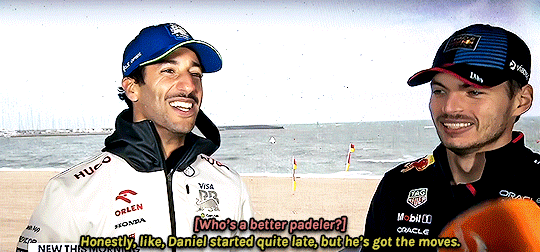
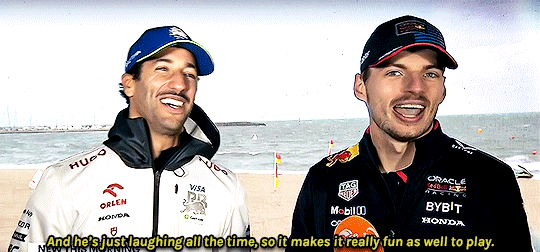



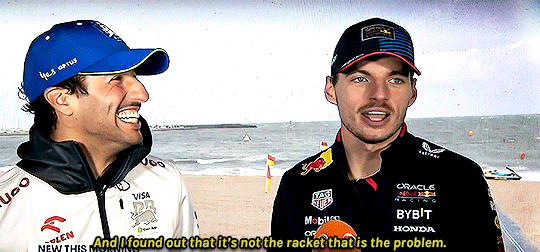
Max and Daniel for Sunrise | 21 March 2024
#max verstappen#daniel ricciardo#f1#op#maxiel#fight of my life to get this gifed#getting the video alone took 12 years off my life#how emma dealt with going through this whole program for a clip is beyond me because this single one took me ages#she's a hero to all#australia 2024
476 notes
·
View notes
Text


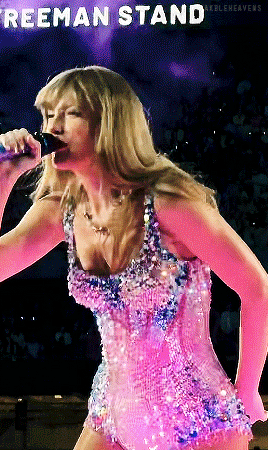
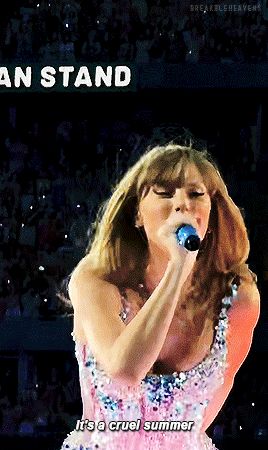
CRUEL SUMMER
The Eras Tour — Sydney, Australia (Night 2) | February 24, 2024
#tswiftedit#taylorswiftedit#tswiftgif#taylor swift#the eras tour#eras tour#cruel summer#lover#eras tour australia#eras tour sydney#eras sydney n2#*mine#*2024#*gifs#mine: eras tour#mine: lover#fought for my life looking for a good enough front on video to gif had to crop so much omfg but AHHHH MY SHOWWW#not pictured is me screaming somewhere in the stadium
490 notes
·
View notes
Text
"The world’s coral reefs are close to 25% larger than we thought. By using satellite images, machine learning and on-ground knowledge from a global network of people living and working on coral reefs, we found an extra 64,000 square kilometers of coral reefs — an area the size of Ireland.
That brings the total size of the planet’s shallow reefs (meaning 0-20 meters deep) to 348,000 square kilometers — the size of Germany. This figure represents whole coral reef ecosystems, ranging from sandy-bottomed lagoons with a little coral, to coral rubble flats, to living walls of coral.
Within this 348,000 km² of coral is 80,000 km² where there’s a hard bottom — rocks rather than sand. These areas are likely to be home to significant amounts of coral — the places snorkelers and scuba divers most like to visit.
You might wonder why we’re finding this out now. Didn’t we already know where the world’s reefs are?
Previously, we’ve had to pull data from many different sources, which made it harder to pin down the extent of coral reefs with certainty. But now we have high resolution satellite data covering the entire world — and are able to see reefs as deep as 30 meters down.
We coupled this with direct observations and records of coral reefs from over 400 individuals and organizations in countries with coral reefs from all regions, such as the Maldives, Cuba and Australia.
To produce the maps, we used machine learning techniques to chew through 100 trillion pixels from the Sentinel-2 and Planet Dove CubeSat satellites to make accurate predictions about where coral is — and is not. The team worked with almost 500 researchers and collaborators to make the maps.
The result: the world’s first comprehensive map of coral reefs extent, and their composition, produced through the Allen Coral Atlas.
The maps are already proving their worth. Reef management agencies around the world are using them to plan and assess conservation work and threats to reefs...
In good news, these maps are already leading to real world change. We’ve already seen new efforts to conserve coral reefs in Indonesia, several Pacific island nations, Panama, Belize, Kenya and Australia, among others."
-via GoodGoodGood, May 2, 2024
--
Note: You can see the maps yourself by going here!
#coral#coral reef#sea creatures#marine life#underwater#coral reefs#conservation#conservation news#climate change#hope#hope posting#hopepunk#environment#environmental science#environmental news#good news#climate action#climate hope#maldives#cuba#australia#machine learning#ai#this is the kind of shit ai should be used for!!!#indonesia#panama#belize#kenya#it's coral week here at reasonsforhope and it's not even on purpose!
268 notes
·
View notes
Photo

Baby Dugong, Ningaloo reef, Western Australia
#tropical#dugong#western Australia#nature#marine life#sea#ocean#Australia#coral coast#ningaloo marine park#tropics
6K notes
·
View notes
Text
so you wanna write a heartbreak high fic, but you're american (part 3)
I decided to create a separate post for the HSC, ATAR, uni and post-secondary study because our system is so completely different to American systems (and because my previous post was too long).
In Australia, tertiary study falls into two categories: higher education, and vocational education and training. This post will touch on university, as well as other forms of tertiary study and trades.
The uni part of this will be the longest because it tends to be the thing most people get wrong.
Preliminary/HSC
In NSW, year 11 (Preliminary) only goes for three terms. In term 4 of the calendar year in which you started year 11, you start the HSC course, which goes from term 4 of that year to term 3 of the following year. Midway through term 3, you do your trial exams (if you are doing music/drama/languages/anything with a performance/oral component/major work, you will have your practical exam/major work submission in the latter part of term 3). You then will have a graduation ceremony at the end of term 3, and your HSC exams will happen in October-November (term 4), while the kids in the grade below you are starting their HSC coursework. Nothing you do in year 11 counts towards the HSC (until term 4); in fact, nothing you do in any year up until you do your first HSC assessments counts towards your HSC. We don't have grade point averages here. Actually, your rankings in your individual subjects are probably more important than your actual marks (this video explains it). More academic kids might get a bit more competitive about rankings but also tend to want to work together to ensure that they all do well.
ATAR
After you do your HSC exams in year 12, depending on the combination of subjects you did and how well you did in your courses, you get an ATAR, which determines what courses you can get into at uni. This article explains somewhat how different subjects are scaled (because there are some that are perceived to be more difficult than others; this is objectively true in some cases, for example, advanced maths is called advanced for a reason so a higher mark in advanced should be seen as more meaningful than a higher mark in standard, but in other cases, it gets a bit more confusing. What it boils down to is certain subjects tend to attract more 'high achievers' than others, so get scaled higher. That being said, the prevailing advice is that everyone should choose the subjects they like and are good at, not what they think will get them into uni.
Higher education
Firstly, we call university "uni" here. We don't say "college" or "school" to talk specifically about university (if an Australian person is talking about going to school, they're either still in compulsory schooling, i.e. K-12, or they're a teacher). We do sooooort of have college here, but I'll touch on that later.
In Australia, kids apply for the course, not the university. Whether or not you get into the course you want is, for the most part, dependent on your ATAR. The exception is if you're applying for something like a creative arts course that might require an audition, or submission of a portfolio. Most unis offer early admission, particularly for kids who live in rural areas, and UNSW has a program for indigenous students for Business, Education, Law, Medicine, Social Work, or Science & Engineering. The most common universities you'll hear about in Sydney are USyd, UNSW, UTS, Western Sydney Uni and Macquarie, then there are ANU and UC in Canberra, LaTrobe in Albury/Wodonga, CSU in Dubbo/Bathurst/Wagga Wagga, UNE in Armidale and Newcastle Uni. There's also Notre Dame, which is a private, religious institution, and a bunch of other smaller schools.
USyd is the oldest university in NSW; it's referred to as a sandstone uni and tends to be the most sought after one that most people want to go to.
Most courses here are Commonwealth Supported, and domestic students are allowed to claim what's called HECS, meaning that you defer payment of your uni fees until you start earning a certain amount of money, and then it comes out of your taxes. In some cases, scholarships are offered, but those are generally more academic scholarships, or, say, for students studying to be teachers, they might get offered a scholarship to teach a certain school subject and as part of their scholarship get a guaranteed position at a hard-to-staff schooling area. As I said in part 2, we don't have anything like the NCAA here (it's not like the Sydney Uni basketball team has a mega rivalry with the UNSW basketball team like UNC vs Duke for example). Australian kids also don't have to pay exorbitant fees to apply for the courses they want. When I was applying to uni as a year 12 student, I paid something like $30 to UAC and applied for every arts/law course available in the Sydney area. I think there's a limit on how many courses you can apply for (maybe 16 or so) but it has been a while since I've applied for an undergrad uni course, so I could be wrong. That being said, a kid might be eligible for a scholarship if they excel at sport, but I believe they'd have to be already enrolled in the university and achieving academically at a certain level first.
Coming back to the "college" thing - a lot of kids tend to go to uni where they live and commute to and from there. That being said, sometimes kids come from towns where there are no universities, or kids from Sydney might end up going to uni interstate or to somewhere like Charles Sturt, which has campuses in Dubbo and Bathurst. "College" in Australia refers to the residential housing available to students living on campus (usually kids studying away from home, but some locals also choose to opt for this as well).
As for uni life, I'd suggest researching the different social clubs and societies different universities have.
Vocational education and training
Not everyone chooses to go to uni after they leave school. A lot of schools actually offer school-based apprenticeships and traineeships (SBATs) in a number of different industries, which counts towards the HSC and is professional work experience. Early childhood and automotive tend to be really popular. TAFE (Australia's largest vocational education and training provider) provides a lot of courses and opportunities for people (some of the courses are actually really cool; a friend of mine did a music course through TAFE and recorded a bunch of singles).
Work experience
This isn't really related to post-secondary schooling, but is still a pretty important aspect of the NSW school experience. Usually in year 10, kids spend a week doing work experience (there's actually a plot in the original Heartbreak High series about it that Jane and Leanne from Snarkbreak High talked about). Kids generally have to organise it themselves and it's usually related to a career they'd like to have after school. My younger brother did his at our local vet, and after that, he realised he no longer wanted to be a vet.
Other resources
Wikipedia (don't let anyone tell you not to use it - it's one of the best peer-reviewed journals ever and all the info on Australian schooling there is completely legit)
NESA
Bored of Studies forum
Snarkbreak High podcast (this is run by 2 Australian teachers; I think they're from Melbourne and they're currently only doing the original series but they have some great commentary, and they've even had Scott Major, aka Peter Rivers, aka Darren's dad as a guest)
Sydney Morning Herald (they always have a ton of articles about NSW schooling)
UNSW Indigenous Pre-Program
#heartbreak high#fanfic advice#basically a guide to how to write about school in australia if you're american#life in australia#i actually know way more about this shit than i have any right to wtf
10 notes
·
View notes
Text
🐙 Daily Cephalopod Fact: 🐙
Giant Cuttlefish: The giant cuttlefish, also known as the Australian giant cuttlefish, is the world's largest cuttlefish species, growing to 20 inches in mantle length and up to 39 inches in total length. They can be over 23 lbs in weight.
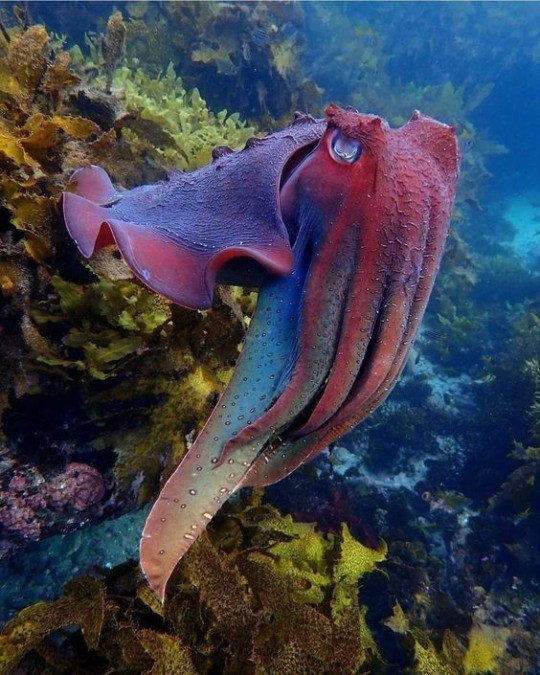

#australian giant cuttlefish#giant cuttlefish#cuttlefish#cephalopod#daily cephalopod#daily cephalopod fact#cephalopod facts#facts about cephalopods#shark blog#respect the locals#marine animals#marine#marine biology#marine life#ocean animal#ocean#australia
182 notes
·
View notes
Text
An Toàn Giao Thông Tại Úc - Những Điều Du học sinh Cần Biết
Giữ an toàn khi đi lại trên đường cho du học sinh úc
Di chuyển bằng phương tiện giao thông công cộng ở Úc là một cách tuyệt vời để đi du lịch. Lái xe cũng có thể là một lựa chọn giúp bạn có nhiều tự do hơn. Dưới đây là một số lời khuyên hàng đầu để giữ an toàn khi đi du lịch và học tập ở Úc.
Dưới đây là một số lời khuyên về cách giữ an toàn khi du học sinh úc đi du lịch.
Xe buýt, xe lửa, xe điện…

View On WordPress
0 notes
Text

" B U D D I E S " //© jferraragallery
#Australia#nature#Sea Floor#Ocean Floor#Wildlife#Marine Life#Sharks#aesthetics#wanderlust#explore#follow#discover
640 notes
·
View notes
Text
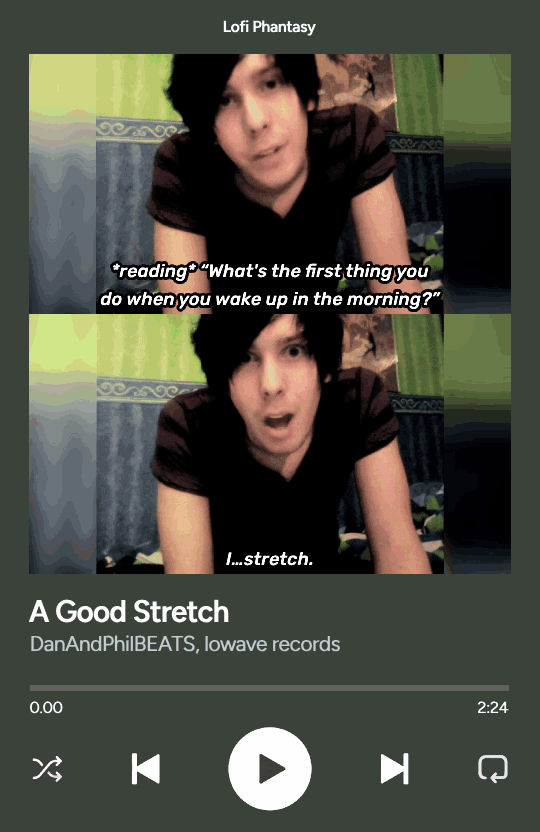
lofi phantasy: the album
track 11: a good stretch
#and like yes this second-half of the gifseries was Also so i could use that iconic 2009!phil moment for this track cause like.#it's so relevant#dan and phil#daniel howell#danisnotonfire#amazingphil#phil lester#danandphilbeats#dpgdaily#phan#dnp gifs#my gifs#compilation#lofiphantasygifs#Lick my soap#20 Things I Wish I Knew Age 20#Daniel and Depression#A Week in the Life of Dan and Phil!#A Day in the Life of Dan and Phil in AUSTRALIA!
183 notes
·
View notes
Text

Swedish high jumper Gunhild Larking at the 1956 Summer Olympics in Melbourne, Australia
#gunhild larking#sweden#swedish#olympics#female athletes#athletics#athlete#athletes#high jump#summer olympics#olympic games#melbourne#australia#1956#sports#sport#life magazine#photograph#photography#george silk#europe#european#high jumper
870 notes
·
View notes